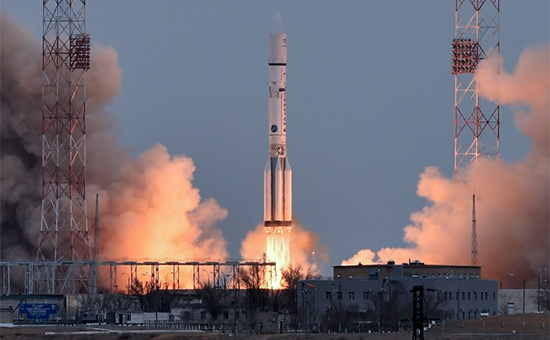Russian Proton-M rocket has put into near-earth orbit two spacecraft of the Russian-European ExoMars mission-2016. They will have to study the trace gases of the Mars atmosphere and the distribution of water ice in the Martian soil.
Proton booster with two spacecraft of the Russian-European mission was lauched on Monday afternoon from the Baikonur cosmodrome. Live broadcast of the rocket launch was available on the Roskosmos website.
As TASS News Agency reports, citing the state corporation Roscosmos, the combination of upper stage and spacecraft Trace Gas Orbiter and Schiaparelli have successfully separated from the third stage of the rocket.
In the first phase of ExoMars-2016 the orbital module of the Trace Gas Orbiter will study trace gases of the atmosphere and the distribution of water ice in the Martian soil using Russian scientific equipment. The second device Schiaparelli is designed for testing technologies of entry, descent, landing and conducting research with scientific instruments. The main objective of the mission is to search for the evidence of methane in the planet’s atmosphere which could confirm the presence of life, and to test key technologies for the second ExoMars expedition.
The second phase of the mission will be implemented during the next launch in 2018. Then it is planned to deliver on Mars a full lander module and the Mars rover vehicle. Thanks to the implementation of the second phase of the mission ExoMars, Europe and Russia will have a possibility to drill the Martian soil to two meters in depth.
